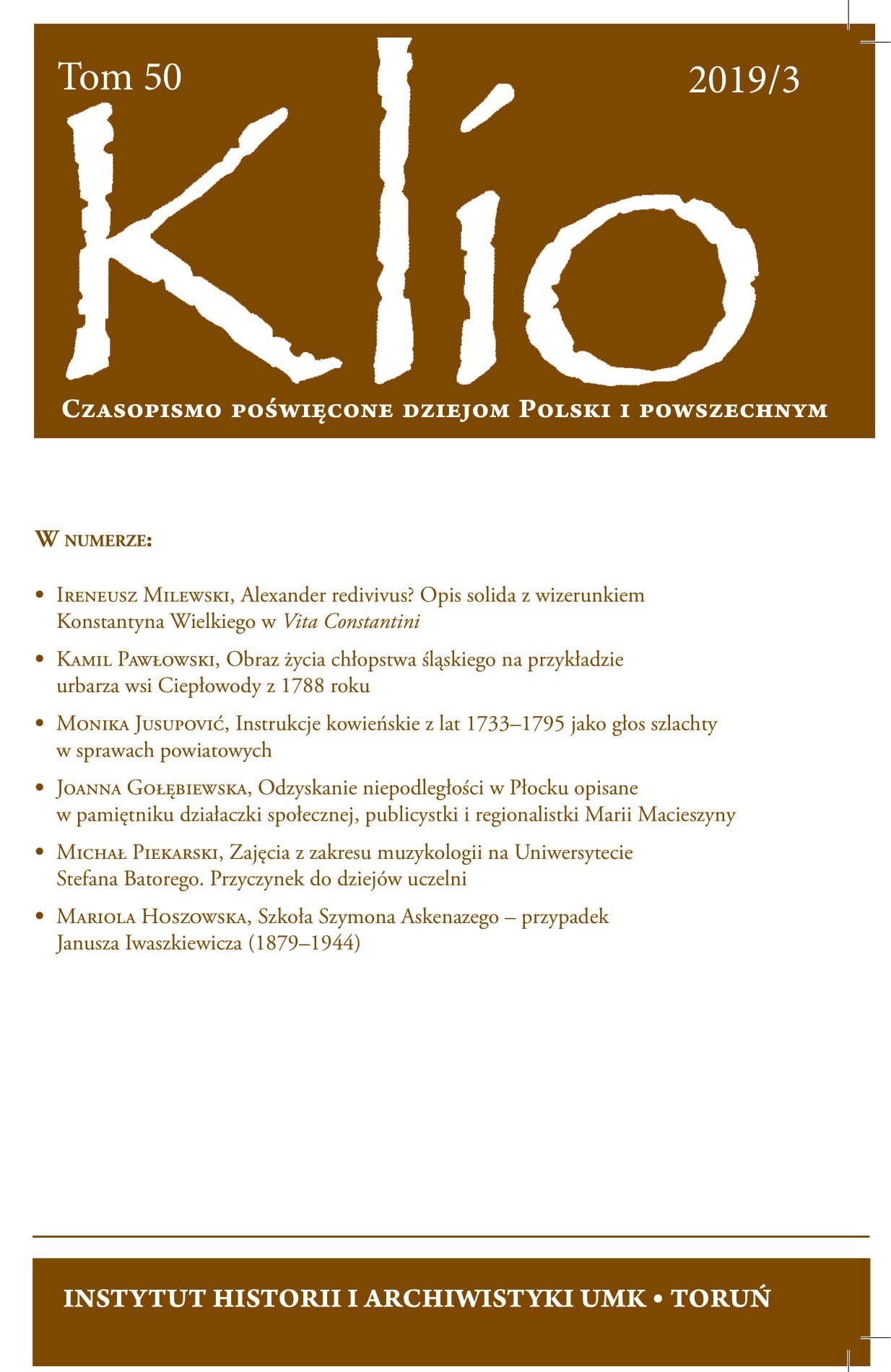Alexander redivivus? Opis solida z wizerunkiem Konstantyna Wielkiego w Vita Constantini
Alexander redivivus? The description of a solidus with the image of Constantine the Great in Vita Constantini (IV,15)
Author(s): Ireneusz MilewskiSubject(s): History, Ancient World
Published by: Wydawnictwo Naukowe Uniwersytetu Mikołaja Kopernika
Keywords: Constantine the Great; late antiquity; early Byzantium; ancient and early Byzantine numismatics
Summary/Abstract: The text analyses the description of a solidus presenting Constantine the Great engrossed in prayer. According to the author of the report, presenting the emperor with the uplifted eyes was meant to prove his piety. Numerous variants of solidi described by the author Vita Constantini (IV, 15), have survived to the present day. Identical image of the reverse was also minted on emperor Constantine’s bronze coins, as well as bronze and silver coins of his sons and cousin. When analysing iconography of coinage, one should also take into consideration the image of the reverse, which supplements the propaganda message revealed on the obverse. In the case of the described solidus, the imagery is not only of religious nature but it shows also the military power of the Roman Empire. The imaging described by Eusebius of Caesarea was no novelty in ancient numismatics. It drew upon the depiction of Alexander the Great and some other Hellenic kings, who claimed the right to rule in the East. It is no different in the case of the analysed portrayal of the emperor Constantine. It is shown on the coins issued after 324, when the emperor, having defeated Licinius, had to face the Persian threat. One of the elements of this policy was portraying himself, his sons (Constantine, Constantius and Constans) and nephew (Delmatius) as “new Alexanders”. Analysing the above description, the author of the article also points to the erratic translation of the text into Polish and into others modern languages (German and French). The source of the mistake probably was the interference of the Latin translation as found in Patrologia Graeca.
Journal: Klio. Czasopismo poświęcone dziejom Polski i powszechnym
- Issue Year: 50/2019
- Issue No: 3
- Page Range: 3-17
- Page Count: 15
- Language: Polish

